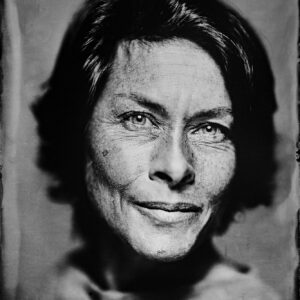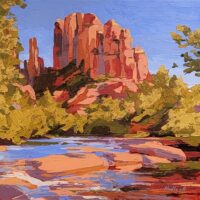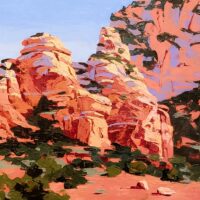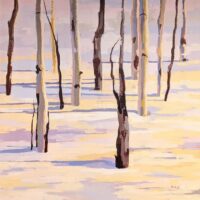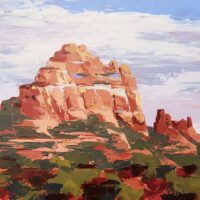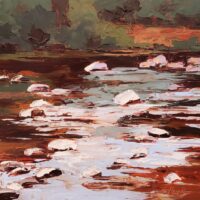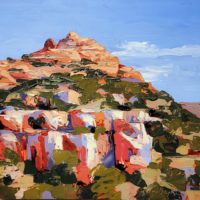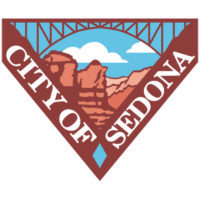Hadley Rampton’s paintings are an amalgamation of her love of composition, color, mark making and being present in the outdoors. “I’m energized by the challenges and beauty of nature, by the dynamics of light, atmosphere and temperature in the Rocky Mountains and in the deserts of the southwest” says Rampton. Her work rests somewhere between abstraction and realism. “It’s clear to see in [Rampton’s] work that her sense of being outside mixes with her thoughts and blends with her knowledge of formal color theory, paint application, as well as a feel for the abstract composition.” (Michele Corriel, Western Art & Architecture, 2015). In plein air painting, there is an immediacy that takes hold and guides the process. Rampton grasps hold of this energy but, especially in her larger pieces, combines it with a more contemplative studio approach, as she will work on the same piece over several days. “I prefer to work onsite where I not only see the scene before which I stand but feel its light, weather and mood. Those feelings inform the energy by which I lay down each stroke. I paint with a palette knife in bold strokes, happy to break my subject matter down into simplified form composed of value and color. This is a two dimensional surface upon which I work and I don’t want to hide that. I want my process and the abstract nature of the accumulation of paint strokes to be evident, but when one stands back, for a three dimensional, Renaissance form and space to emerge. This is what excites me.”
After having drawn and painted for as long as she can remember, Rampton graduated from the University of Utah with an Honors BFA in Painting and Drawing in 1999. During her course of university study, she spent a semester in Florence, Italy at the Instituto di Lorenzo d’ Medici studying studio art, Renaissance Art History and History of Renaissance Architecture. Rampton began painting professionally shortly after graduation. Over the course of her 20 year professional career she has participated in numerous Juried Exhibitions and Solo shows held at such venues as The High Desert Museum, Bend, OR, Desert Caballeros Museum, Wickenburg, AZ, Willard Art Center’s Carr & Hall Galleries, Idaho Falls, ID, Springville Museum of Art, SLC, UT, Eccles Art Center, Ogden, UT, Salt Lake Community College, Phillips Gallery, SLC, UT and Art Access, SLC, UT. She has been featured in several publications including Plein Air Magazine, Western Art & Architecture, Judsons Plein Air Journal, Artists of Utah’s 15 Bytes Online Publication and Southwest Art Magazine. Rampton’s work can be found in the collections of the Wallace F. Bennett Federal Building, SLC, UT, the Yellowstone Club, Big Sky, MT, Questar Gas, SLC, UT, Aspen Traditional Rehab, Meridian, ID, Rowland Hall-St. Marks, SLC, UT, the Law Firm of Preg, O’Donnell & Gillett, Seattle, WA, Rooker Mohrman, Rawlings & Bailey, SLC, UT, Ballard, Spahr, Andrew & Ingersoll, SLC, UT and Hutchinson & Steffen, Las Vegas, NV. She is currently represented by Phillips Gallery, Salt Lake City, UT, Torrey Gallery, Torrey, UT and Abend Gallery, Denver, CO.
Artist Statement
I’m crazy, I’ve heard, for painting in the mountains in the dead of winter, or for battling swarms of biting flies in summer. But I’m energized by the challenges and beauty of nature, by the dynamics of light, atmosphere and temperature in the Rocky Mountains and in the deserts of the southwest. The changes in weather that occur while I’m painting do not bother but thrill me. A storm welling on the horizon, gaining momentum and catching me in its fury fills me with exhilaration. Even the same location can time and again leave me with a sense of awe. Some days I work with great energy, slapping paint with a palette knife, dripping turpentine and then pushing around the thinned paint or letting the drips create patterns of their own. Other days, I’m quieter, and my use of the palette knife is more controlled, as I attempt to honor the integrity of each stroke. I work on instinct more than thought, for instinct holds greater honesty and clarity.
I begin by painting the actual scene before me, but as the painting progresses I delve into the personality of the painting, itself. A three way dialogue forms between the natural scene, the painting, and me. Which one speaks loudest changes from moment to moment, and, if any one becomes dominant for too long, the work can fail. It is the balance between the three that keeps me engaged. My paintings are a direct response to my environment and to my existence in it.


